6 Reasons & Fixes for Check Brake System Ford F150 Error!
Diagnosing the cause of an error message can be tricky as it could indicate various issues. While the problem may be within the transmission system, the potential solutions may come from different areas.
So, what are the reasons for the check brake system Ford F150 to show up?
Ford’s “check brake system” message arises due to ABS module communication, worn-out brake pads, low brake fluid and leaks, a faulty sensor in the vacuum brake booster, battery issues, loss of traction control, etc. You can change the vacuum hose, replace the brake pads or fill up the brake fluid to solve this message.
You must better understand why regularly checking your Ford F150’s brake system is so important and so keep reading on!
What Is the Check Brake System Ford F150?
If your car’s message center displays a warning that reads “Check Brake System,” this indicates a problem with the Brake system. It may be an issue with the brake fluid, brake pads, calipers, lines, or other components.
It says that your brakes likely need servicing, but it could also mean there’s a malfunction within the system. Many times, the ABS module can simply not respond to the computer and show this message.
But when the vehicle dies after starting and shows this message, the problem has spread wider, mostly into the engine running system. But you should never ignore this warning as any error in the braking system is life-taking!
The problem was reported to have appeared in all F150 versions from 2010 to 2021. In most cases, the owners have seen the Ford F150 parking brake light won’t turn off.
Reasons Behind Check Brake System Warning Ford F150
| Reason | Symptom | Solution |
| Low Brake Fluid Level causes Check Brake System Warning Ford F150 | Low Fluid Reservoir | Add Brake Fluid To The Reservoir |
| Worn Brake Pads | Squealing And Clicking Noises | Change The Brake Pads |
| Brake Fluid Leak | Spongy or Loose Brake Pedals | Hoses Replacement |
| Faulty Vacuum Brake Booster | Increased Braking Distance | Replace Vacuum Brake Booster |
| Faulty Brake Calipers | Vehicle Pulls To One Side When Driving or Braking | Replace The Brake Caliper |
| Lost Traction Control | Vehicle Brakes Inconsistently | Replace The Traction Control Module |
| Battery Issues | Engine Stalls When Brakes Are Applied | Replace The Battery |
Reason 1: Low Brake Fluid Level
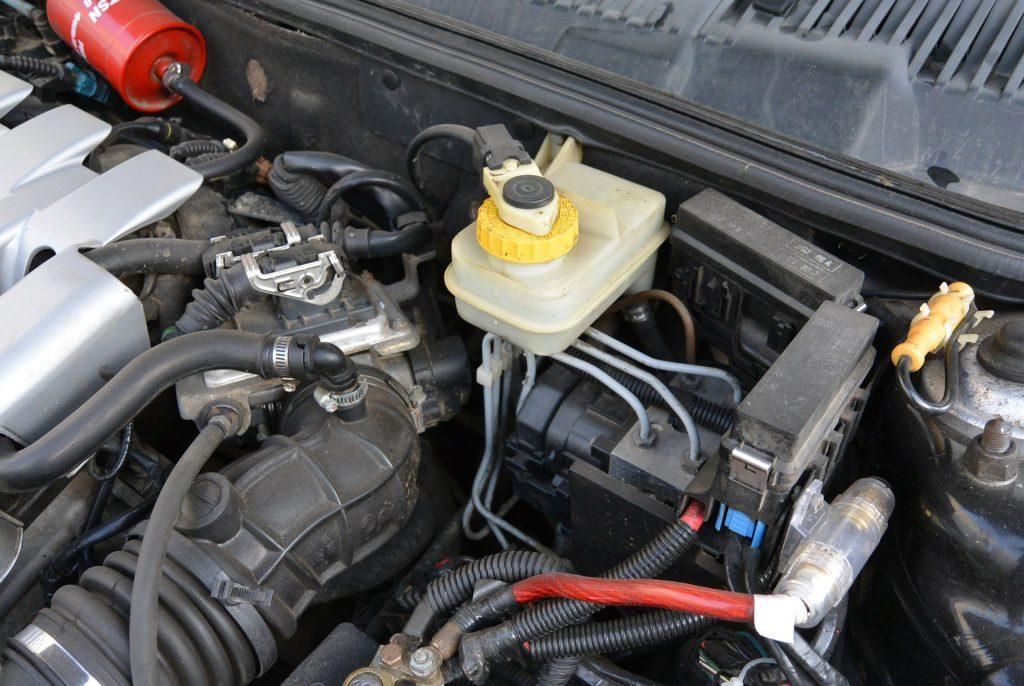
At a certain point in the vehicle’s running time, overheating the engine causes evaporation. Overheating may happen due to extreme weather conditions.
This natural process of evaporation due to fluctuations in temperatures can generate a slight but steady decrease in fluid levels. Such fluid degradation can be the reason for age and poor fluid quality, making things break down faster than they should.
In many cases, low brake fluid can also indicate leaks. Many times, this causes the check brake system in the Ford F150.
When this happens, you need to know how to check the brake fluid Ford F150 and understand the symptom to apply the appropriate fix.
Symptom: Low Fluid Reservoir
The condition or symptom of low fluid reservoirs in Ford due to low brake fluid level can cause various other symptoms, such as increased stopping distance, increased brake pedal effort, brake shudder, and even a burning smell.
Fixes for some other similar conditions will be discussed later; here, find out how the solution will go forward to make the fuel reservoir stay full.
Solution: Add Brake Fluid To The Reservoir
Adding brake fluid to the vehicle reservoir is not a big deal; you can do it yourself.
- First, locate the reservoir. The brake fluid reservoir is usually located near the brake master cylinder.
- Next, use a funnel to pour the brake fluid into the reservoir. Be sure to use the manufacturer-specified brake fluid and use the same type of fluid already in the reservoir.
- After adding the brake fluid, check the level and top up as necessary.
- When done, replace the cap on the reservoir and make sure it is secure.
If there are no other issues in the Ford, rest assured the error message will not appear again. However, there can be other complications present too, which you can inspect with the help of a mechanic at a repair shop.
Reason 2: Worn-Out Brake Pads
The brake pads on a Ford vehicle become worn over time due to regular use and friction from the brakes being applied. As the brake pads wear down, the brake system becomes less efficient, decreasing stopping power.
The worn-out brake pads can cause the traction control system to fail, leading to decreased braking efficiency and a check brake system warning light.
As the pads continue to wear down, the brake system will eventually reach a point where it can no longer provide enough stopping power to operate the vehicle safely. This is another reason for the check brake system message to come up.
Symptom: Squealing And Clicking Noises
Worn brake pads can cause squealing and clicking noises in a car. The noise is caused by a metal tab on the brake pad rubbing against the rotor when the brakes are applied.
This clicking noise can happen when off also and is a warning sign that the brake pads are worn and must be replaced.
Solution: Change The Brake Pads
Your vehicle repair guide will tell you how it is a relatively simple task to change the brake pads. You will need a few basic tools, including a jack, jack stands, wrenches, a flathead screwdriver, a breaker bar, and a torque wrench.
- First, jack up the car and secure it with jack stands.
- Then, remove the caliper and the brake pads, noting the orientation of the brake pads if applicable.
- Clean the caliper surface and the rotor with brake cleaner.
- Install the new brake pads in the same orientation as the old ones and re-install the caliper.
- Use the torque wrench to tighten the caliper bolts and lower the car to end the process.
If you are unsure about doing the job by yourself, take professional help, but do reflect on the process of how it works. This is to help you generate better awareness of the solutions.
Reason 3: Brake Fluid Leak
A fluid leak in the brake is caused by a failure in the brake system components. This can be due to a worn or damaged brake hose, a faulty brake caliper, a worn-out brake master cylinder, or a worn or damaged brake line.
The brake fluid is typically held in a reservoir, and when the brake system is pressurized, the fluid will move through the brakes and pressurize the system. Brake fluid leaking most of the time causes this message to come up.
Symptom: Spongy or Loose Brake Pedals
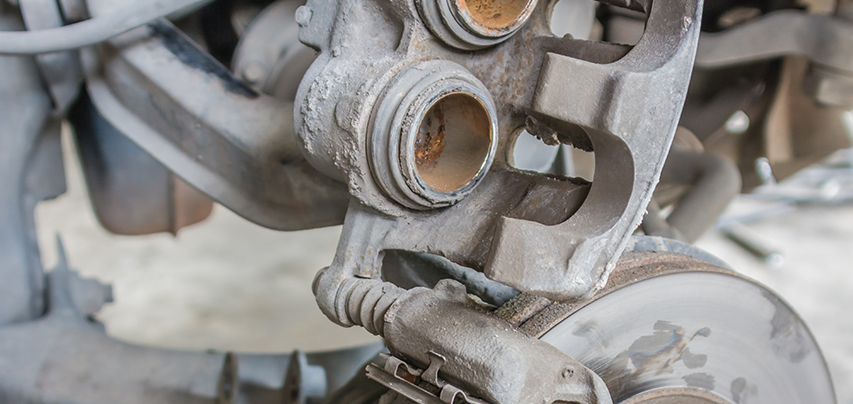
A brake fluid leak can cause the brake pedal to feel spongy or loose because the brake fluid is used to pressurize the brakes. When the brake fluid leaks, the brakes can no longer be pressurized, resulting in a loss of braking power.
Solution: Hoses Replacement
To solve the leak issue, you need to replace any damaged parts that are causing the trouble. As the procedures for replacing faulty brake calipers will be pointed out later, we will focus on the process of replacing the hoses.
- First, the old hoses must be removed. This can be done using a socket wrench or other appropriate tools. This is mainly to loosen and remove the clamps and bolts that hold the old hoses in place.
- Once the old hoses are removed, the area should be cleaned of any debris that may interfere with the installation of the new hoses.
- Then, the new hoses should be installed in the same place as the old hoses, using the same tools and procedures.
- Finally, the new hoses should be secured with clamps or bolts, and the brake fluid reservoir should be filled with new brake fluid.
The process should be repeated for each hose that needs to be replaced and when done check how the brake system is functioning.
Reason 4: Faulty Vacuum Brake Booster
A faulty vacuum brake booster can cause issues with the brake system due to a number of different factors. A vacuum leak in the brake booster, or a bad power brake booster, can cause a lack of power assist when the brake pedal is pressed.
This can result in an overly firm pedal and difficulty stopping the vehicle. A vacuum leak can also lead to an increase in brake pedal travel and a decrease in brake pedal pressure, resulting in reduced braking performance.
Symptom: Increased Braking Distance
If the vacuum port is blocked, the booster may not be able to generate enough vacuum. This is to properly assist the brake system, which results in an increased braking distance.
Solution: Change the Vacuum Hose or Replace the Vacuum Brake Booster
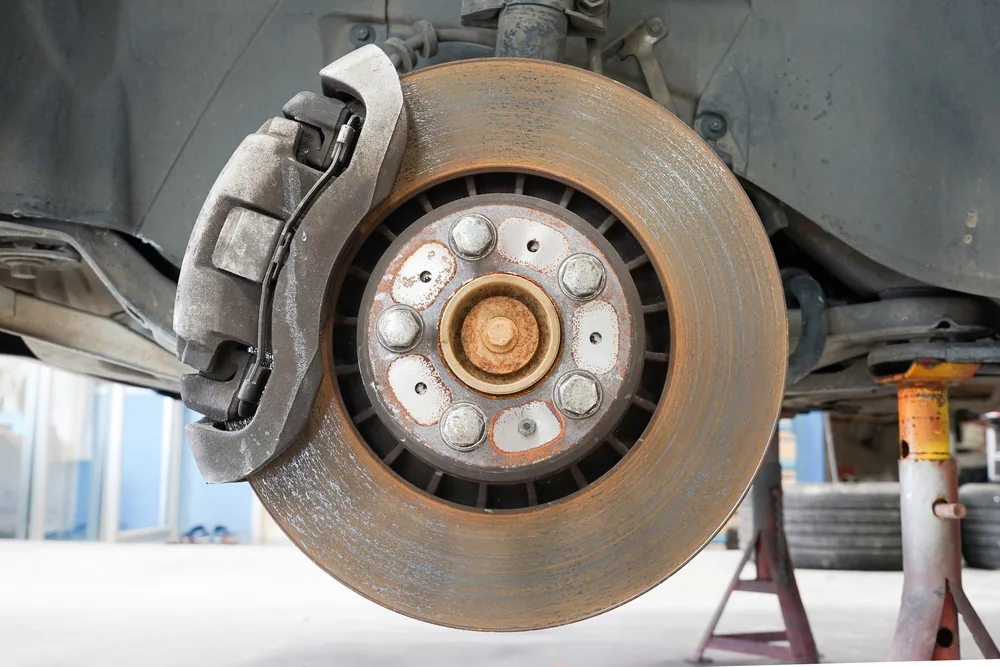
First of all, you can change the vacuum hose for this problem. Go to a mechanic for installing the new vacuum hose. Also, check for vacuum leaks. In most cases, it solves the problem.
But if it doesn’t, you can try replacing the vacuum brake booster.
- First, you will need to locate and remove the brake booster from the engine compartment. This may involve removing some other components, such as the master cylinder or power steering pump, to gain access.
- Once the old brake booster is removed, you will need to install the new one in its place.
- You may need to adjust the mounting brackets or bolt holes to fit the new booster.
- Next, you will need to reconnect the brake lines to the new booster, ensuring that all connections are secure.
Finally, you will need to reconnect the vacuum line to the booster and test the brakes to ensure they are functioning properly. It would be a success if you see that the brake system is back on track.
Reason 5: Lost Traction Control
When a traction control system is lost in a Ford vehicle, it can be caused by several issues. The most common cause is an issue with the vehicle’s electronic control module (ECM), which is responsible for managing the vehicle’s traction control system.
Another common cause of a traction control system being lost is faulty ABS sensors. You can try resetting the ABS system to solve the issue. It can be seen that one issue can give rise to other issues and all in combination can make the “check brake system” message appear.
Symptom: Vehicle Brakes Inconsistently
A lost traction control module can cause issues including an inability to confidently stop the vehicle predictably. Other issues may include pulsing or jerking of the brake pedal, and an inability to maintain control of the vehicle in slippery conditions.
Solution: Replace The Traction Control Module
The process of replacing the Traction Control Module in a Ford vehicle is actually very simple.
- First, you must locate the module, which is usually located underneath the dashboard.
- Once you have identified it, you should disconnect the negative battery cable to ensure that the vehicle is not receiving any power.
- Next, use a screwdriver to remove the module from its bracket.
- Once the module has been removed, you can then install the new module and reconnect the battery cable.
You should test the new module by starting the vehicle and testing the traction control system. If all is working properly, the job is complete.
Reason 6: Battery Issues
The Ford check brake system message can also be caused by a low battery or when the battery is not charging properly. When the battery is low, the car’s electrical system will not be able to provide enough power to the brakes, resulting in the message being displayed.
If the problem is persistent, then the battery is old and not functioning at its best. It needs a replacement, but before that, check out if the following symptom is present in your vehicle.
Symptom: Engine Stalls When Brakes Are Applied
When a car’s battery has a poor charge, the engine can stall when the brakes are applied. This is because the battery is supplying the electrical power to the car, and when it is low, the engine is unable to keep running.
Solution: Replace The Battery
Replacing a car battery is a relatively simple process, and can usually be completed in about an hour.
- You need to purchase the correct battery for your vehicle. Make sure to check the specifications so you get the right size, voltage, and amperage for your vehicle.
- You must disconnect the negative (black) cable from the battery. If there is a plastic cover, you must remove it first.
- After that, disconnect the positive (red) cable from the battery. Make sure to cover the post of the battery to avoid short circuits.
- Remove the bolts that hold the battery in place.
- Carefully lift the old battery out, taking care not to spill any of the acids that may be present.
- Put the new battery in the tray, taking care to line up the terminals correctly.
- Bolt the new battery in place securely.
- Reconnect the positive (red) cable first, and then the negative (black) cable.
- Now, replace the plastic cover, if applicable, and start the engine to check that the battery is working. If it’s working, it’s fully assured that the message will not appear again.
How To Check Brake Fluid Ford F150
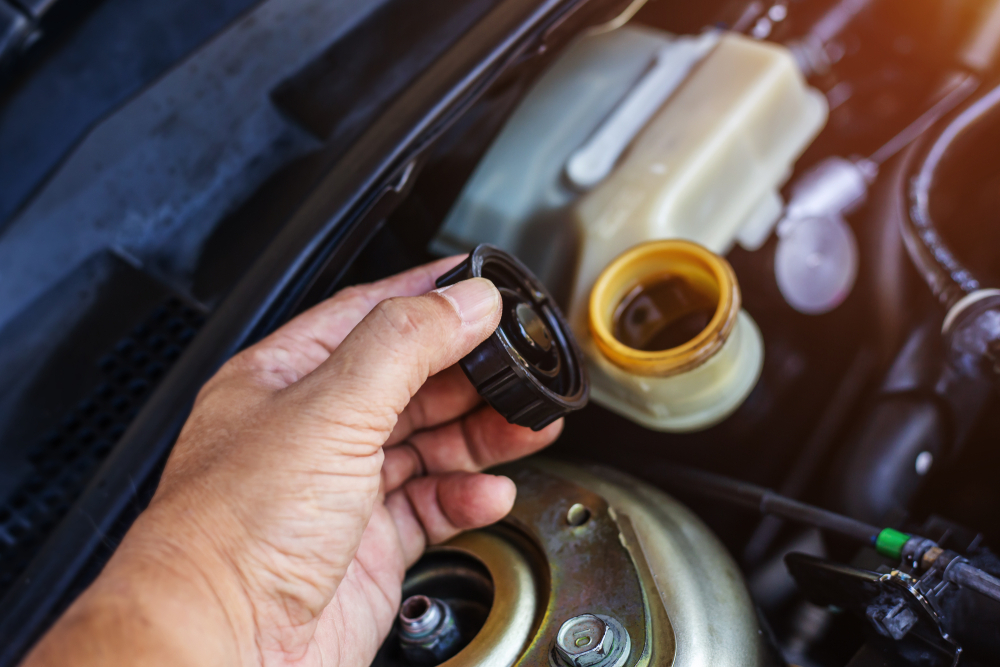
It is important to check your brake fluid regularly to ensure the brakes are working properly.
- Open the hood and locate the brake fluid reservoir. The brake fluid reservoir is usually located near the firewall or on the left side of the engine compartment.
- Check the level of the brake fluid. The brake fluid should be at or above the “Full” line. If the brake fluid is below the “Full” line, add it until it reaches the “Full” line.
- Check the color of the brake fluid. Fresh brake fluid should be a light amber color. If the brake fluid has a dark color or has a burnt smell, it should be replaced.
- Check for leaks. Look for any wet spots or puddles of brake fluid around the brake fluid reservoir or anywhere else in the engine compartment. If any leaks are found, they should be repaired immediately.
By following these steps, you can easily check the brake fluid on your Ford F150. It’s important to do this regularly to ensure the brakes are working correctly and that all components are in good condition.
Frequently Asked Questions (FAQs):
Can I drive with the brake system warning light?
No, you should not drive with the brake system warning light illuminated. This indicates that there is an issue with the brake system, and it needs to be addressed. You should have the vehicle inspected and serviced as soon as possible.
What should you do if the brake system warning light comes on?
If the brake system warning light comes on while driving, it is important to pull over and turn off the engine. Then, check the brake fluid level and look for any leaks. If the fluid level is low, have the brakes serviced immediately.
How do I reset my brake system?
To reset the brake system, check your vehicle’s manual for the specific instructions for your make and model. You may need to disconnect the battery and bleed or replace the brake fluid and pads.
Bottomline
The check brake system Ford F150 is an indication that should be taken seriously. Performing regular maintenance on your brake system is essential in keeping your vehicle running safely and efficiently so that brake issues don’t appear.
It is time for us to leave, see you soon!
Goodbye!

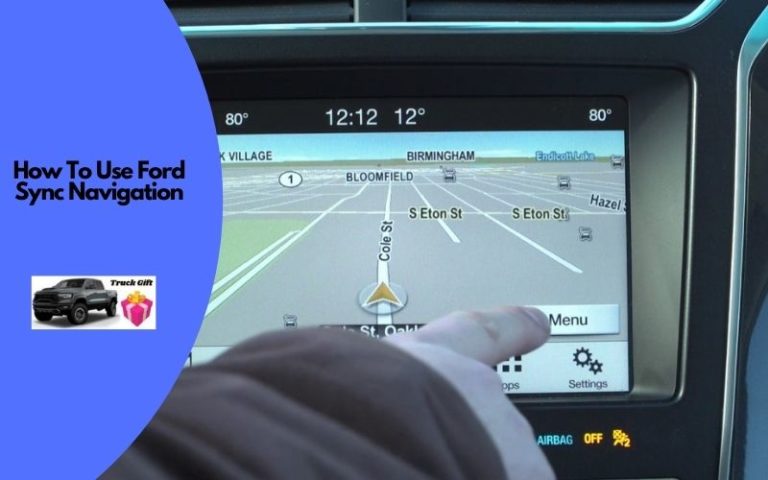
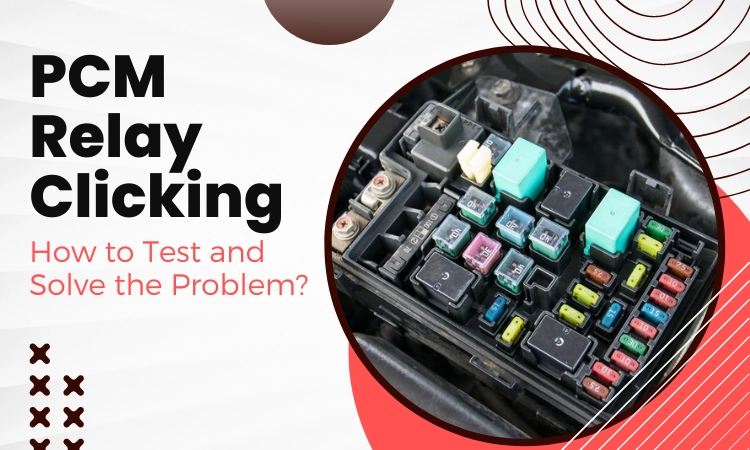
![F150 Ticking Noise When Cold [Explained & Fixed!]](https://truckguidepro.com/wp-content/uploads/2023/03/f150-ticking-noise-when-cold.png)
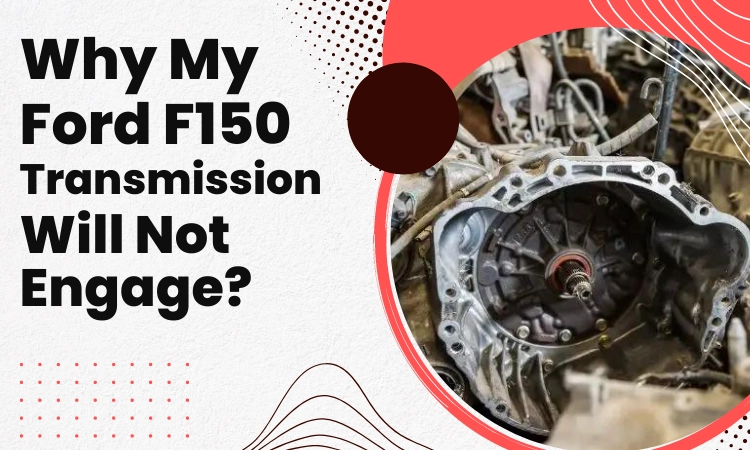
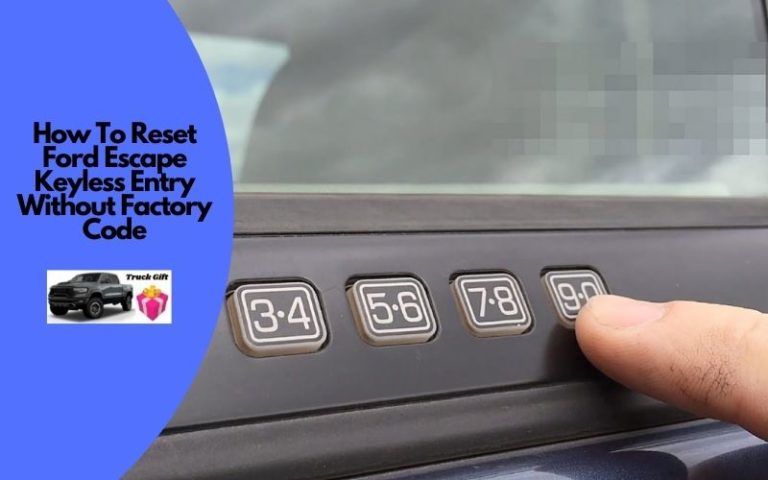
![Ford Pre Collision Assist Not Available Sensor Blocked [Fixed!]](https://truckguidepro.com/wp-content/uploads/2023/01/ford-pre-collision-assist-not-available-sensor-blocked.webp)